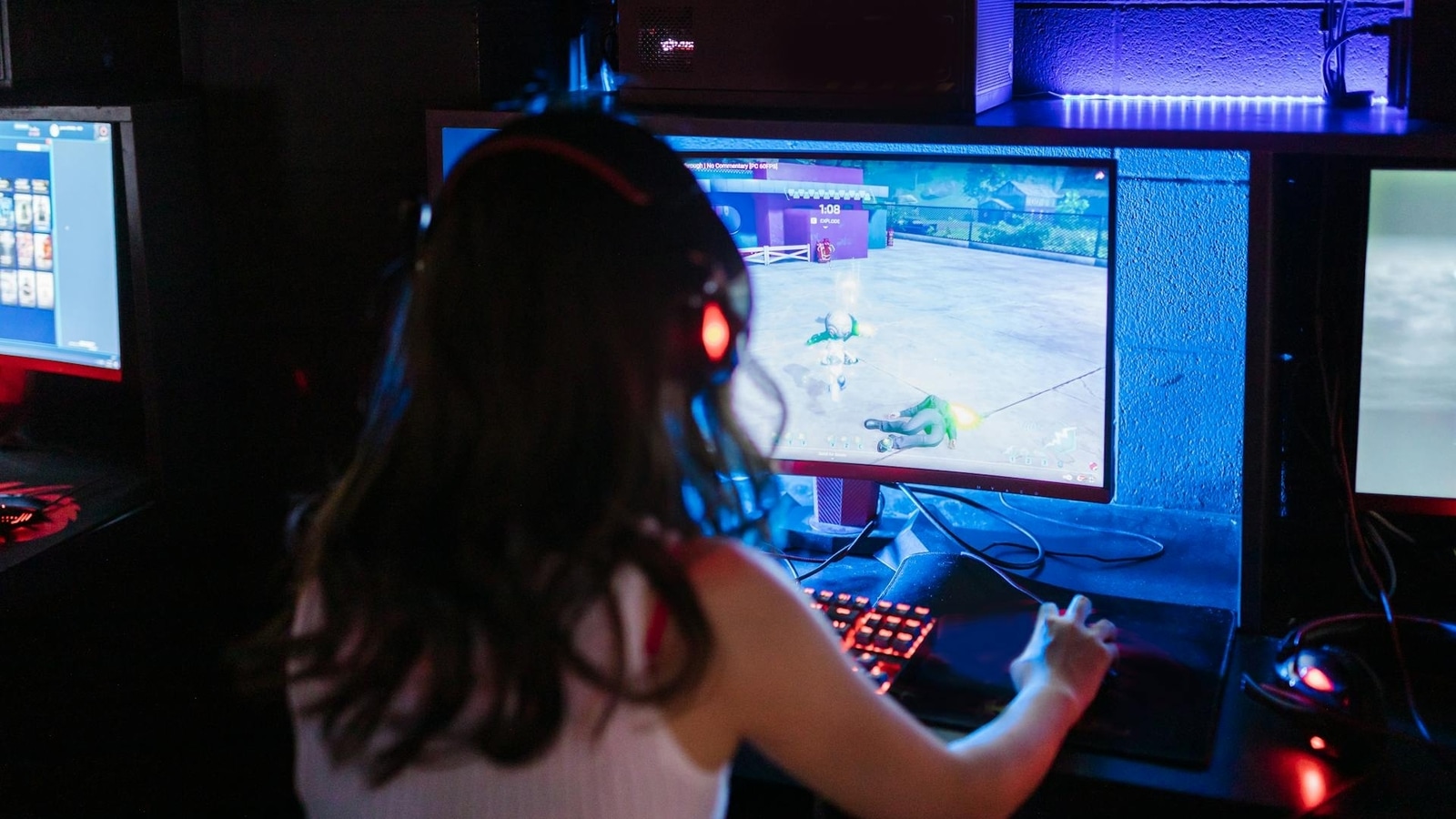First Impressions
Samsung’s first 48-inch OLED puts in a good showing with rich, vibrant colours and super black levels, though the lack of clarity on whether this model will feature an WOLED or QD-OLED panel is puzzling.
Introduction
Samsung’s 2024 line-up is here and it’s not without controversy. At the World of Samsung event held in February I got to see the Samsung QE48S90D.
The initial controversy behind the S90D was that the series consisted of two different OLED panels – LG Display’s WOLED screens and Samsung Display’s QD-OLED. The 42-, 48- and 83-inch were expected to have WOLED panels, while the sizes in-between were thought to be QD-OLED.
That may not be the case.
According to a report from The Elec, with the 55-, 65-, and 77-inch screens you could get either a WOLED or QD-OLED screen, creating a potential “OLED panel lottery”. Not quite what you were expecting? Neither was I.
Design
- Thin screen
- Extended stand
- Strong viewing angles
This hands-on will focus on the 48-inch S90D as that was the only OLED screen I saw, and it featured a WOLED panel from LG Display.
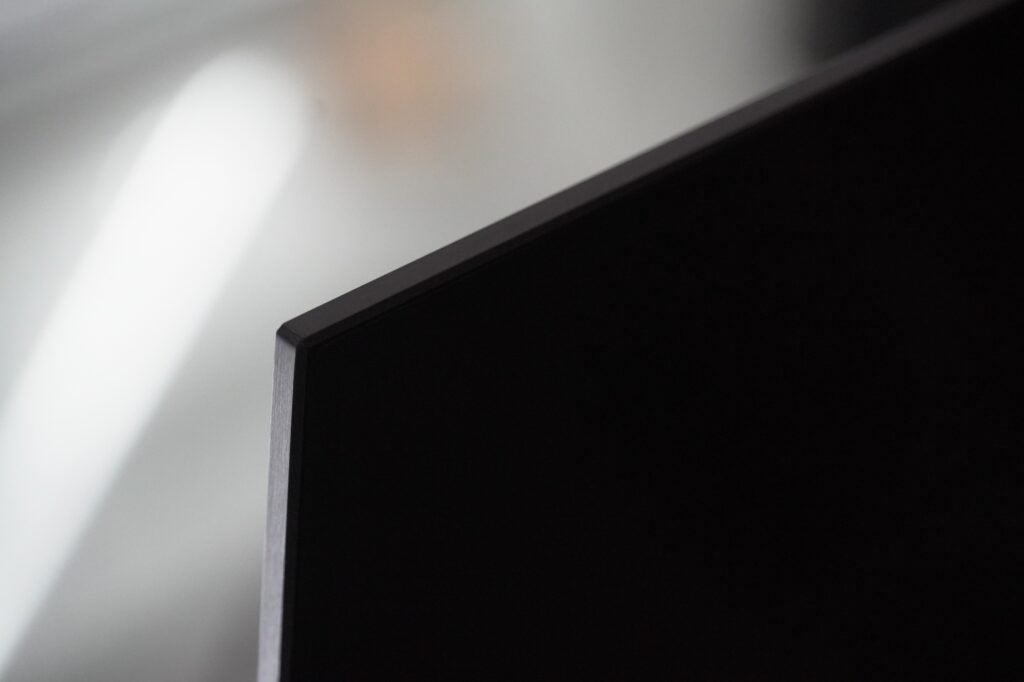
Aesthetically it’s similar to the 48-inch C3 – wafer thin panel, central pedestal stand; though the stand is where things deviate with its bigger footprint, presumably to plant a (Samsung) soundbar on.
Around the rear is a similar design to the S90C featured, a slightly bulky area with connections that are side-, rear-, and downward facing.
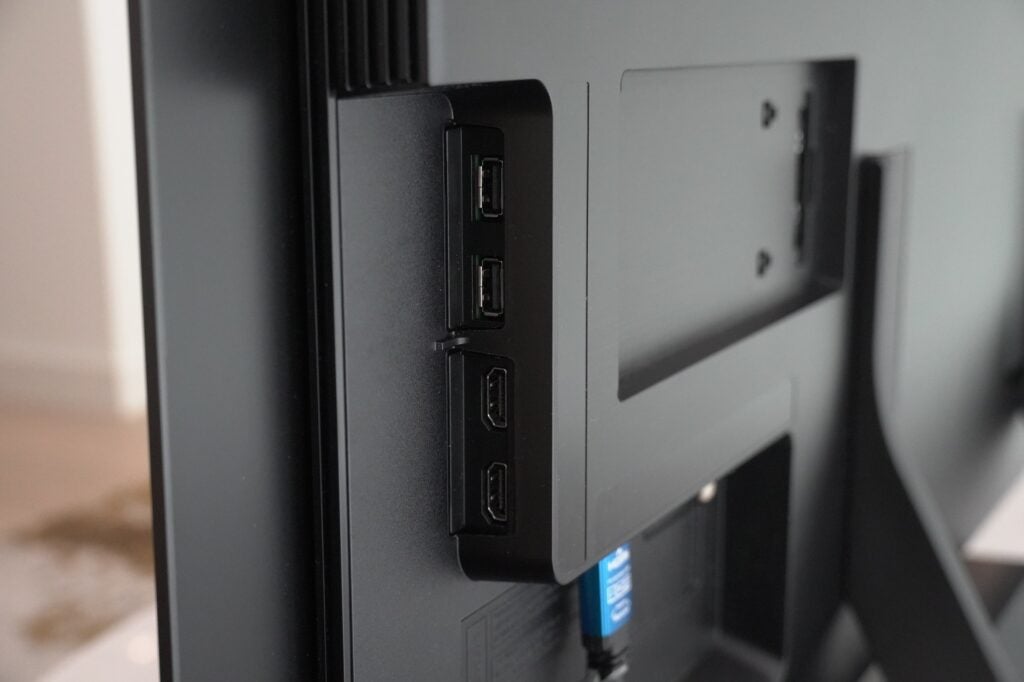
Viewing angles as you’d expect from any OLED were strong with the retention of colour saturation and brightness. This screen should also have an anti-reflection layer, though not to the same level of the S95D, which you can read more about in this article.
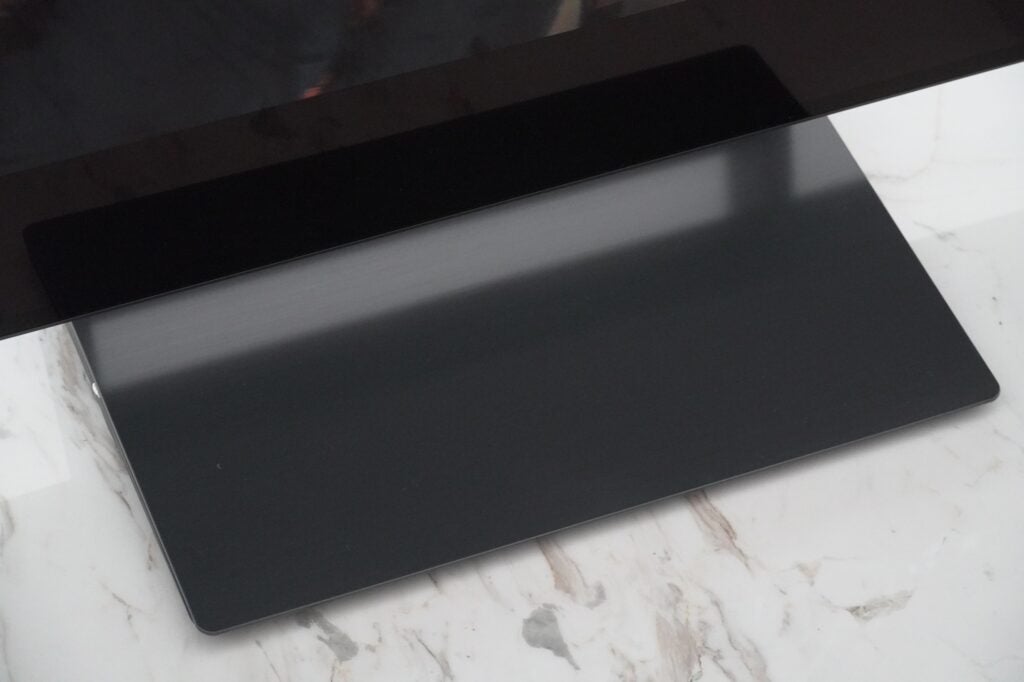
Operating System
- Tweaked look for Tizen
- New smart Hub
Tizen returns in a slightly reconfigured form with the homepage separated into three sections (similar to Prime Video), consisting of ‘For You’, ‘Live’, and ‘Apps’. The intention for the first section (I believe) is for it to be more personalised and tailored to you; ‘Live’ is all about content from FAST channels such as Samsung TV Plus; while ‘Apps’ is, I hope, self-explanatory.
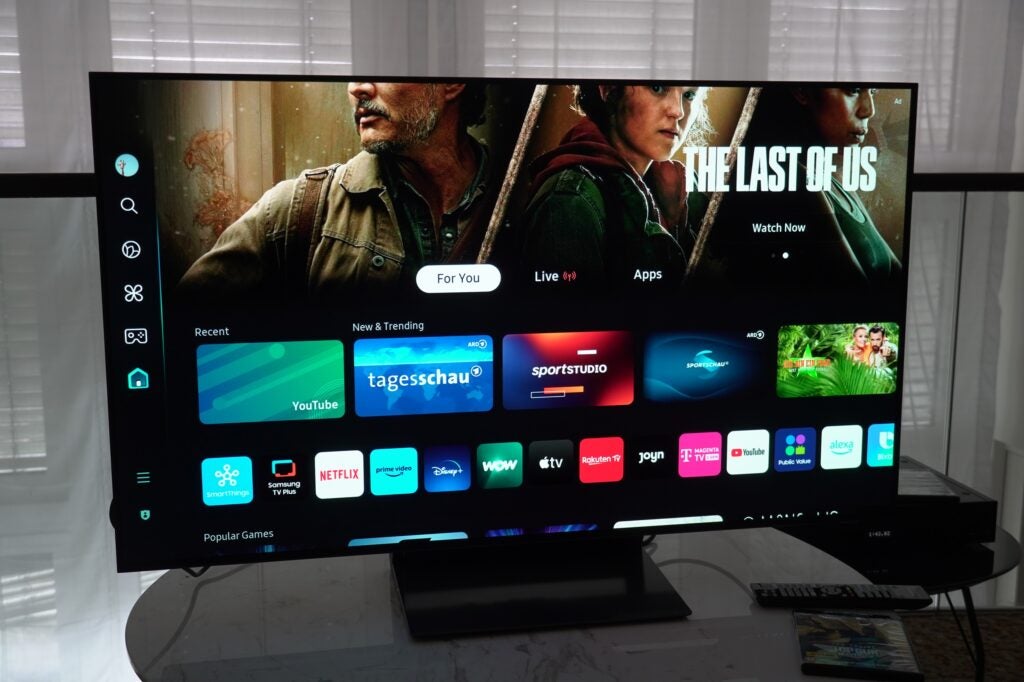
Samsung still hasn’t changed where it positions its menu setting such as ‘Connected Devices’ and the general ‘Settings’ section, so they still feel hidden compared to the rest of the icons.
Aside from the homepage, there is the Game, Daily+, and Ambient hubs. The Daily+ section is where you’ll find smart connected devices, health apps, and workspace areas. If you’ve got a smart camera that works with SmartThings, you can view it through the TV; if you have smart lights, this is the section where you can control them.
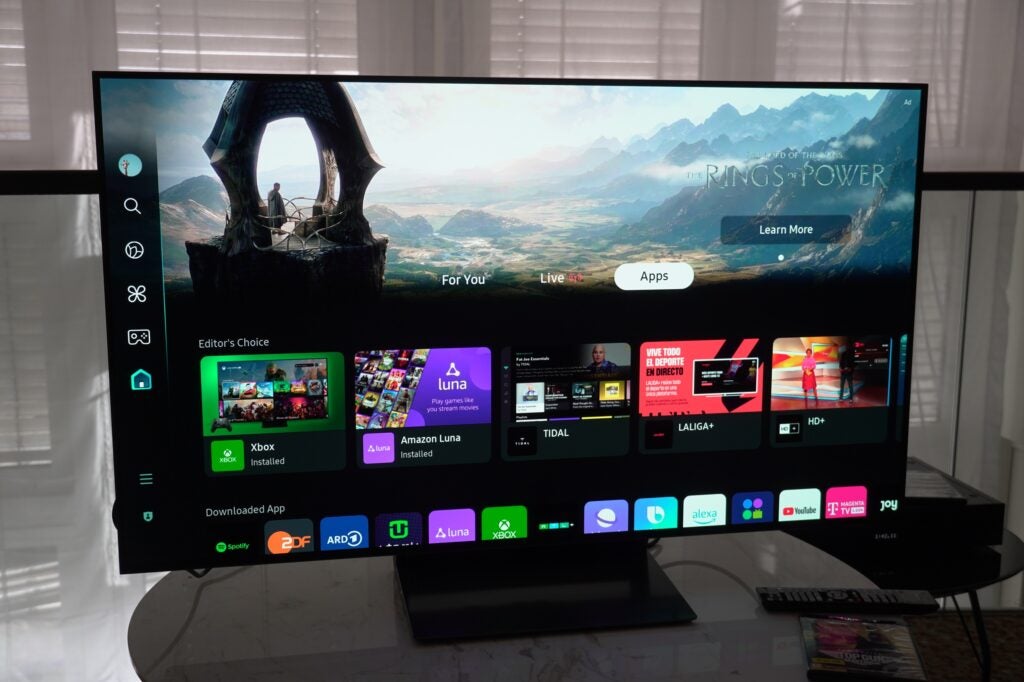
Features
- Up to 144Hz refresh rates
- No Dolby Vision
- Upgraded AI processor
HDMI connectivity extends to four HDMI 2.1 inputs, with the S90D capable of 144Hz gameplay with PC units (120Hz with gaming consoles). I didn’t have my input lag tester with me, but let’s presume it’s around the same performance as the S90C.
ALLM and VRR (HDMI and AMD FreeSync Premium) are supported, and though I didn’t note it down the S90D should work fine with Nvidia G-Sync, though it is not certified for it. The HGiG standard and HDR10+ Gaming are supported too.
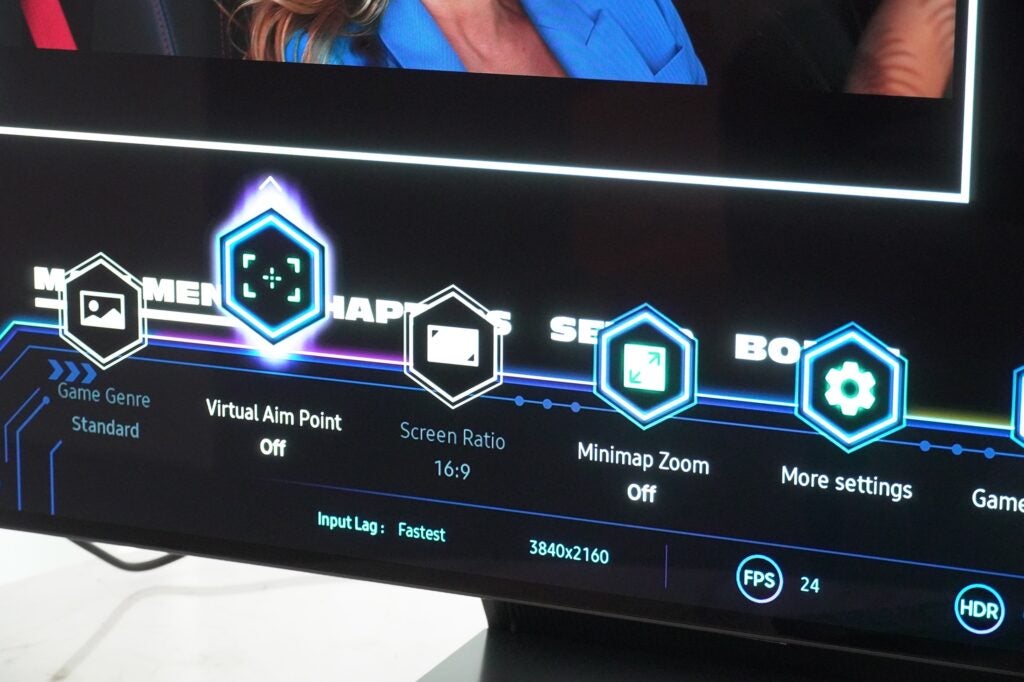
In HDR terms there’s the usual HLG, HDR10, and HDR10+ (in its Adaptive form too) but no Dolby Vision, as is usual with Samsung. Picture presets include Filmmaker mode along with Standard, Dynamic, and Movie.
Dolby Atmos is once again supported, and the S90D gets a 40W OTS Lite sound system, which uses a mix of physical and virtual speakers to create sound. Q-Symphony is also supported with compatible Samsung soundbars (which should be legion at this point).
Powering the show is the NQ4 AI Gen2 Processor, which on the surface should be more powerful, but by how much I’m not entirely sure. From what I’ve gleaned, the next true step up in processing capabilities for Samsung’s 4K TVs is due for 2025.
Picture Quality
- Rich, saturated colours
- Rich blacks
- Loses balance with Contrast Enhancer
I spent a couple of hours with Samsung’s S90D and QN800D, and while not enough to form any concrete opinions, it was enough to get a sense of what Samsung is looking to do with its 2024 TVs.
And the S90D’s picture felt very much like an LG OLED. I think that’s a good thing, though at first it was hard to see Samsung’s own processing in the image.
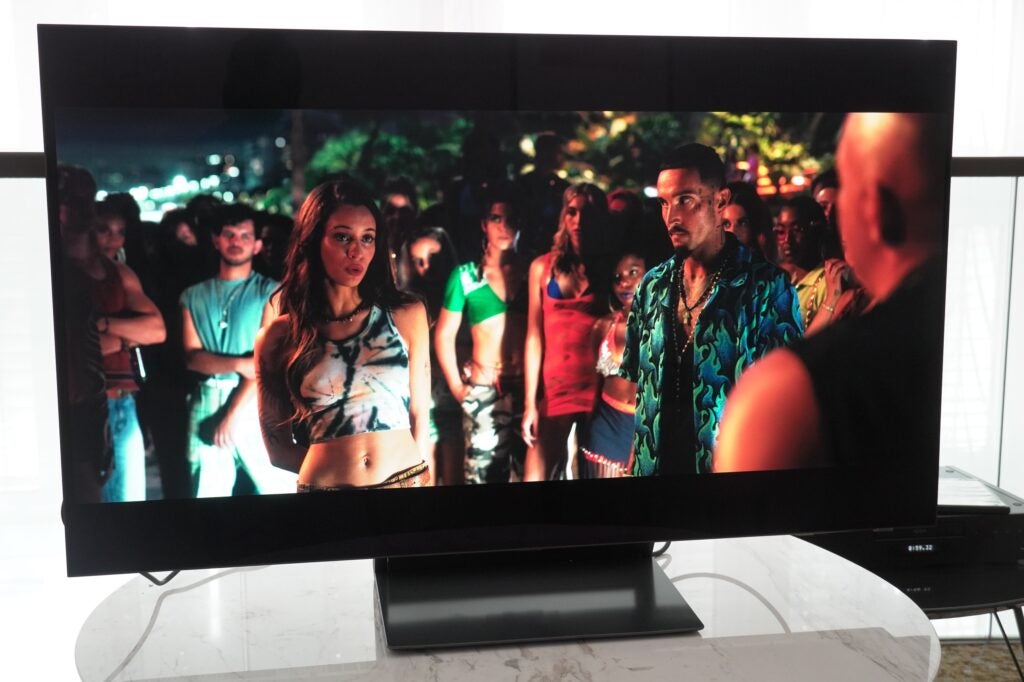
Whether it’s a Hisense, Panasonic, Philips, or Sony TV; you’d usually get a difference in terms of the processing or colour science. Sony boosts the reds, Philips’ images are sharp and defined, Panasonic often boosts blue colours etc.
With the 48-inch S90D, it felt very similar to the approach LG takes – a more balanced yet rich and punchy colour performance (perhaps a little too rich with skintones), with rich black levels, and reasonably good near dark performance. It’d be interesting to see how big a difference there is if this Samsung OLED and an LG OLED were sat next to each other.
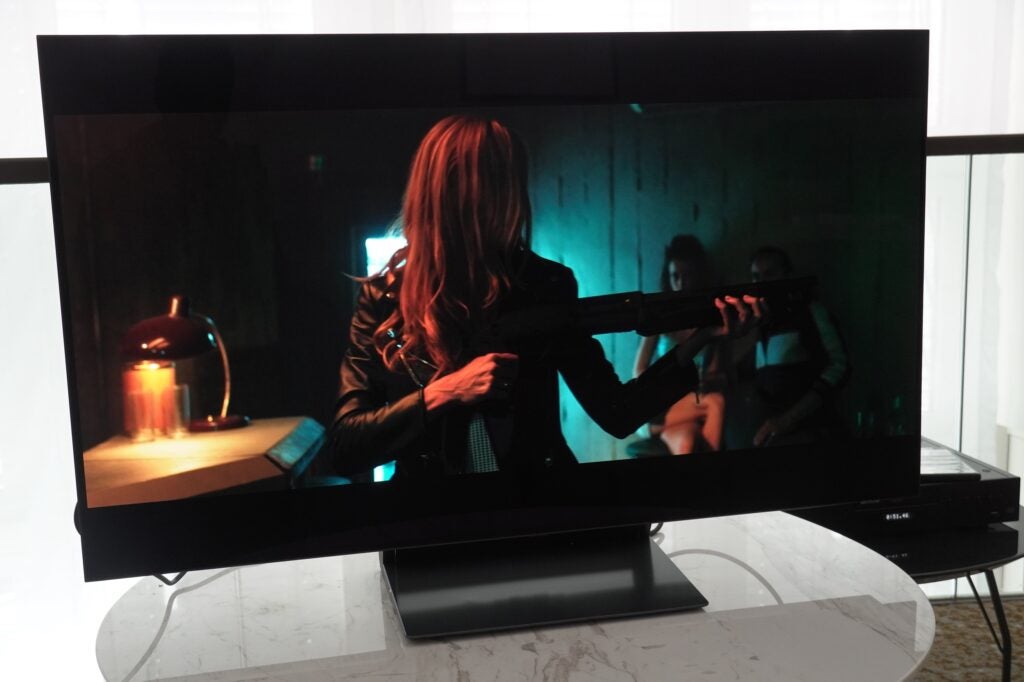
With the 48-inch version and a 4K Blu-ray of Fast X in the disc player, oranges, lime greens, reds, and yellows pop off the screen in the Rio-based car race, and with those perfect blacks in two the S90D packs a very vibrant looking image.
Brightness is not as high as I expected, some rudimentary tests brought up 600 nits of peak brightness and 131 nits at full screen, but in light of its size that’s around the same as the Philips 48OLED808.
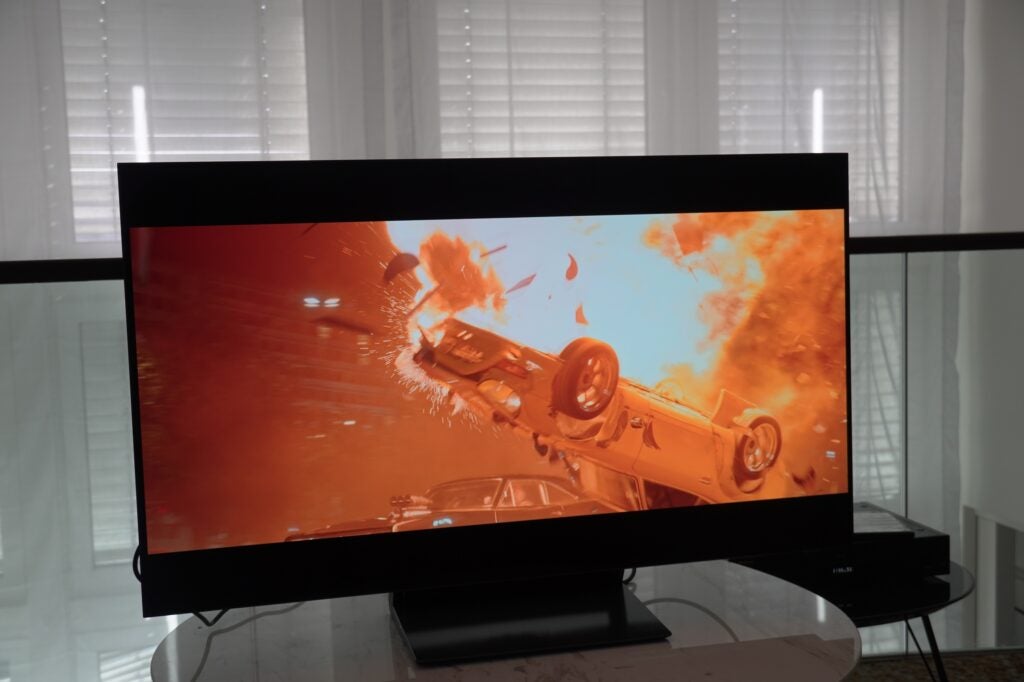
The Contrast Enhancer feature can give contrast a bigger boost, but when used in Movie mode it seemed to raise the noise/film grain in Fast X as well as making skin tones lighter, losing their richness. I preferred how the TV looked with it off.
There were also instances in Fast X where blacks looked with a little raised with Contrast Enhancer on, but with it off, there seemed a little detail lost in the military gear of Cypher’s soliders. It feels like an area where a little bit of tweaking and balance would not go amiss.
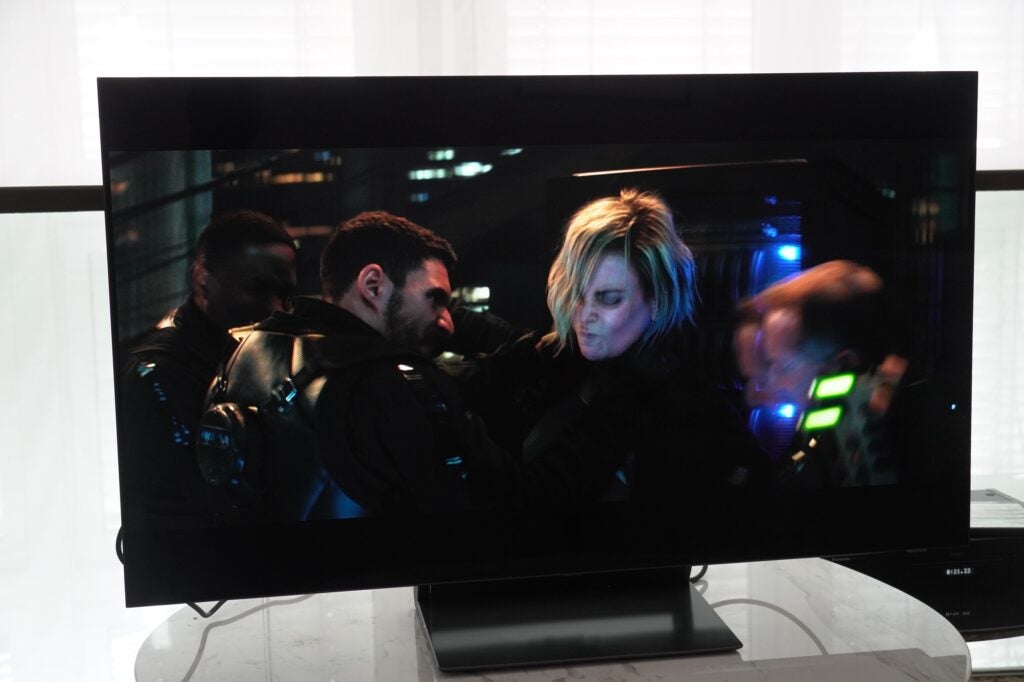
Filmmaker mode is also incredibly dim in a bright room, which is more evidence that the adaptive version is a necessity if it’s going to have any impact going forward.
I wasn’t a big fan of the S90C and S95C’s motion processing but this year’s TVs seem to have gained a few improvements over the 2023 models. Despite some micro stutter and judder, motion on the S90D was much smoother and slicker in the TV’s Auto Picture Clarity mode than I remembered from the older models.
Sound Quality
- Warmer tone than 2023 TVs
- A bit of bass weight
There’s only so much you can do with audio on a TV but from the brief time I spent with the S90D, it seemed to do fine enough.
It sounded a little warmer than I remember from the 2023 models (which did not sound good), with a little bit of bass weight in the action scene where Cypher’s soldiers revolt against her. In fact, it sounds not unlike the direction LG has taken with its G4 OLED.
It’s not the sharpest or clearest performance due to that warmth, but voices do come from the right place on screen, and with a performer such as Vin Diesel who has such a recognisable voice, the S90D is able to add some bass to his voice.
First Impressions
Given the confusion that surrounds the S90D, will the performance I saw here be the same when the TV does arrive in online and brick and mortar shops? I don’t know but based on the TV that I saw, I found the performance to be reassuringly good.
It sounded better than the 2023 models, and carried with it more of the picture performance I’d expect from an OLED with its excellent contrast, rich colours and black levels.
Pricing will be key, but even more important is which OLED panel you’ll get with the QE48S90D. Some may not even realise they’re getting a different screen, but Samsung may have shot itself in the foot by creating unnecessary confusion with the lack of a clear explanation.




